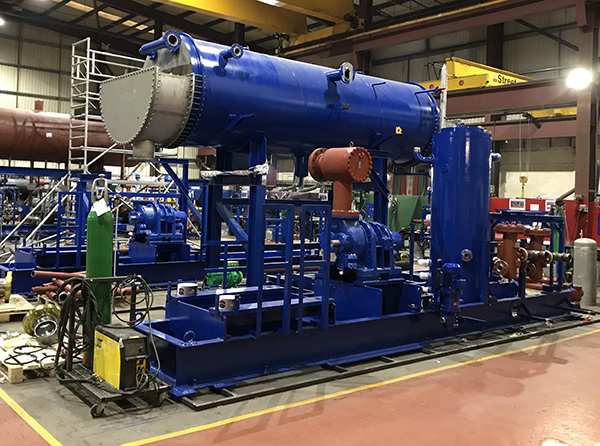22.01.2019
Scotland’s first biggest water-source heat pump

Holger Andreasen & Partner GmbH was delighted to be a part of the project: ”Biggest water-source heat pump in UK”.
According to the Magazine H&V News, publication for the heating and ventilation industry, this is Scotland’s first large-scale 5MW river source ammonia heat pump scheme and is set to be commissioned in the summer as part of the Queen’s Quay regeneration project in Clydebank near Glasgow.
Star Renewable Energy, the manufacturer of the heat pumps, selected Holger Andreasen & Partner GmbH, Flux-Hi™ NH3/H2O Spraychiller with integrated cleaning system to avoid fouling inside the tubes. With this setup the refrigerant is evaporating in the shell and the hot media is cooled inside the tubes. Due to our innovative spraying system only a very low Ammonia charge is needed. The Ammonia Separator is integrated in the Flux-Hi™ Spraychiller as well as a receiver. Our special tube to tube sheet sealing system guarantees high safety against failure.
David Pearson, director of Star Renewable Energy, said about this project: „We needed to find a way to cool river water to harvest the heat. This couldn’t be plate heat exchangers as rivers are too dirty (even when filtered). We also need to be able to cool the river to nearly zero with minimum chance of freezing. Therefore, we chose a Spraychiller and Holger Andreasen & Partner GmbH were able to offer us the best solution using titanium tubes (the river is estuarine and hence saline).
Cleaner heat is never likely to be “easier heat” and this has taken leadership right from the top with European Renewable Energy Systems Directive (RES) leading to Westminster Renewable Heat Incentive (RHI) to Scottish Government Low Carbon Infrastructure Transition Programme (LCITP) all being taken forward by West Dunbartonshire Council (WDC) and of course Vital Energi Utility Limited (VEUL) and the rest of huge efforts all the way down the supply chain. So, it won’t ever be the best set of tiles in scrabble, but it will be low (and lower) carbon, low (or no) NOx emission. Add in the ability to do Demand Side Management (DSM) (switching off if the grid gets stressed) and this project brings even more custom for offshore and onshore clean electrical generation, great news”.
We are proud of everyone who was involved.


